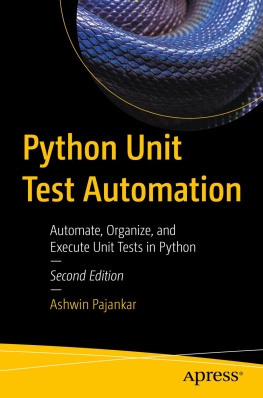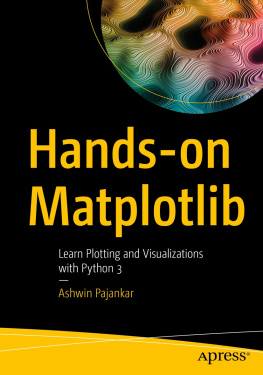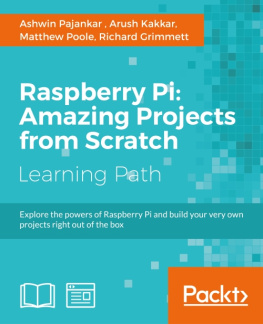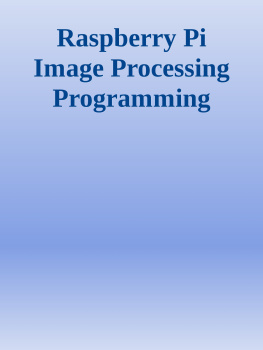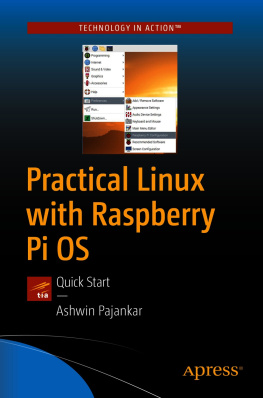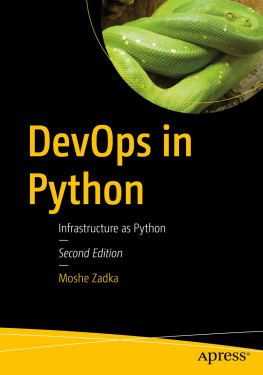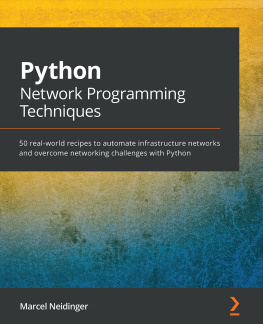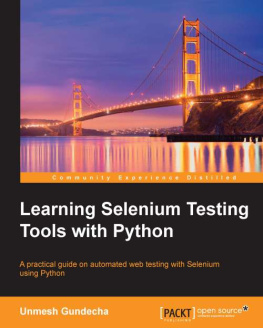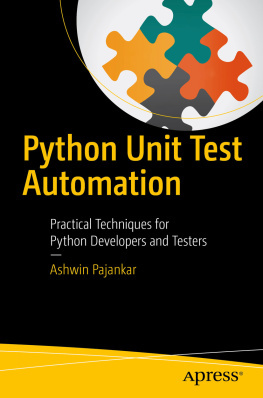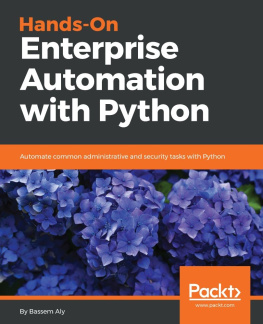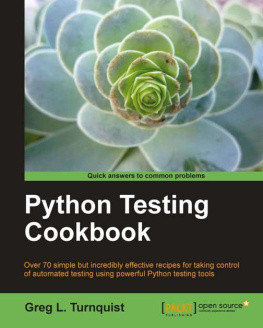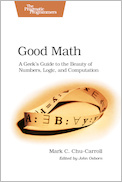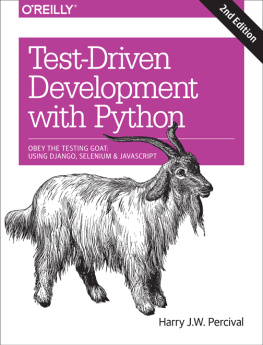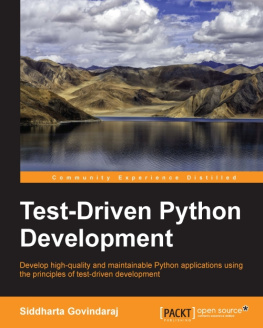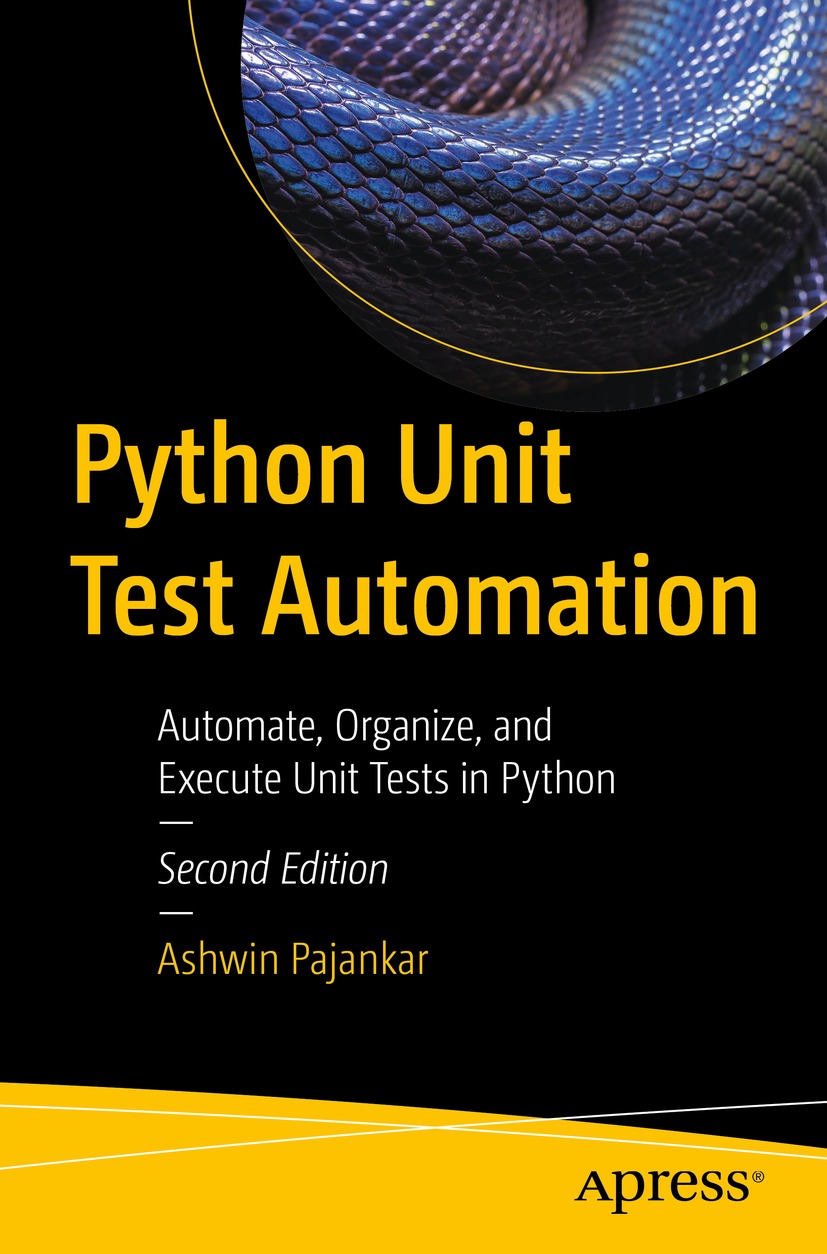Ashwin Pajankar - Python Unit Test Automation: Automate, Organize, and Execute Unit Tests in Python
Here you can read online Ashwin Pajankar - Python Unit Test Automation: Automate, Organize, and Execute Unit Tests in Python full text of the book (entire story) in english for free. Download pdf and epub, get meaning, cover and reviews about this ebook. year: 2021, publisher: Apress, genre: Computer. Description of the work, (preface) as well as reviews are available. Best literature library LitArk.com created for fans of good reading and offers a wide selection of genres:
Romance novel
Science fiction
Adventure
Detective
Science
History
Home and family
Prose
Art
Politics
Computer
Non-fiction
Religion
Business
Children
Humor
Choose a favorite category and find really read worthwhile books. Enjoy immersion in the world of imagination, feel the emotions of the characters or learn something new for yourself, make an fascinating discovery.
- Book:Python Unit Test Automation: Automate, Organize, and Execute Unit Tests in Python
- Author:
- Publisher:Apress
- Genre:
- Year:2021
- Rating:5 / 5
- Favourites:Add to favourites
- Your mark:
Python Unit Test Automation: Automate, Organize, and Execute Unit Tests in Python: summary, description and annotation
We offer to read an annotation, description, summary or preface (depends on what the author of the book "Python Unit Test Automation: Automate, Organize, and Execute Unit Tests in Python" wrote himself). If you haven't found the necessary information about the book — write in the comments, we will try to find it.
Learn how to automate unit tests of Python 3 with automation libraries, such as doctest, unittest, nose, nose2, pytest, and selenium. This book explores important concepts in software test automation and demonstrates how to automate, organize, and execute unit tests with Python. It also introduces readers to the concepts of web browser automation and logging.
This new edition starts with an introduction to Python 3. Next, it covers doctest and pydoc. This is followed by a discussion on unittest, a framework that comes packaged with Python 3 itself. There is a dedicated section on creating test suites, followed by an explanation of how nose2 provides automatic test module discovery. Moving forward, you will learn about pytest, the most popular third-party library and testrunner for Python. You will see how to write and execute tests with pytest. Youll also learn to discover tests automatically with pytest.
This edition features two brand new chapters, the first of which focuses on the basics of web browser automation with Selenium. Youll learn how to use Selenium with unittest to write test cases for browser automation and use the Selenium IDE with web browsers such as Chrome and Firefox. Youll then explore logging frameworks such as Pythons built-in logger and the third-party framework loguru.
The book concludes with an exploration of test-driven development with pytest, during which you will execute a small project using TDD methodology.
What You Will Learn
- Start testing with doctest and unittest
- Understand the idea of unit testing
- Get started with nose 2 and pytest
- Learn how to use logger and loguru
- Work with Selenium and test driven development
Ashwin Pajankar: author's other books
Who wrote Python Unit Test Automation: Automate, Organize, and Execute Unit Tests in Python? Find out the surname, the name of the author of the book and a list of all author's works by series.

